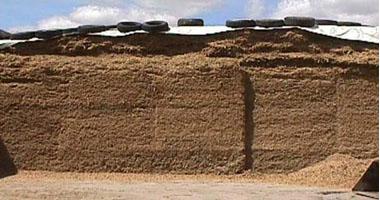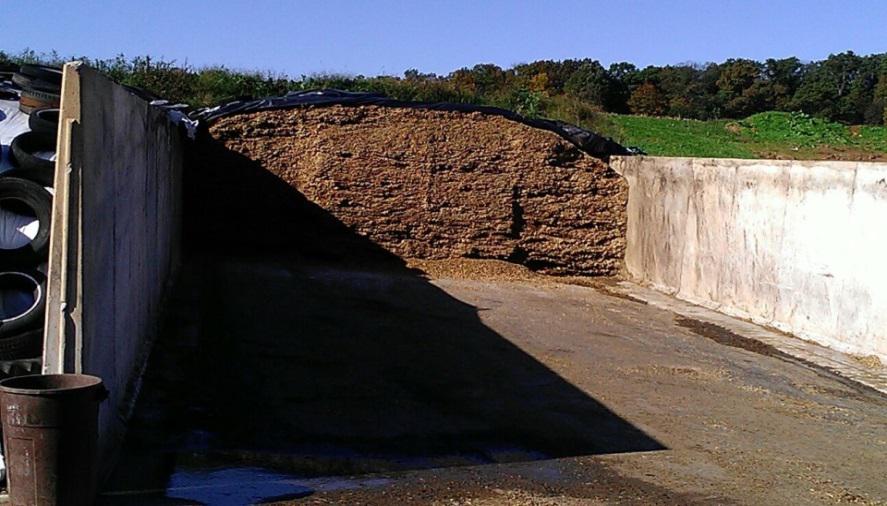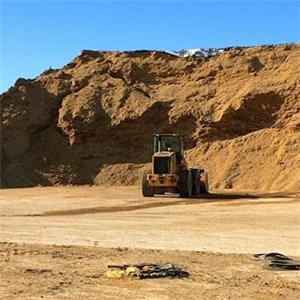Silage is the cornerstone of many conventional dairy rations. Maintaining quality through proper harvest, storage, and feedout is key for a successful feeding program. Once the silage is properly tucked away in the bunker and thoroughly covered it can be stored for extended periods of time until it’s opened up. Anytime silage is exposed to air and oxygen, there is a risk of silage spoiling and molding. This is especially important to keep in mind for silages that are stored in bags, or in bunkers with plastic covers. If the plastic is ripped or punctured, the silage will be exposed to air. Immediately repairing any holes in the plastic is necessary to prevent silage from molding. When feeding out silage, plastic coverings should only be removed from what is being used. Uncovering silage that will not be readily used will increase spoilage and decrease the quality of the feed.

Management of the silage face during feedout is necessary to keep silage fresh and to prevent spoilage. When removing silage from the face itself, the silage needs to be removed in a manner that prevents oxygen from entering the rest of the silage, as can easily happen when using a loader bucket to loosen silage from the rest of the pile. If a loader bucket is being used to remove silage from the face, the silage should be removed starting from the top of the pile and working down. Facers can also be purchased that are very effective at keeping the face smooth. Keeping a smooth silage face will reduce the surface area and therefore reduce the amount of silage being exposed to air. Never allow for overhang on the silage face. An overhang of silage can easily collapse causing a silage “avalanche” which can be deadly. Bunker silos can be very dangerous when not properly maintained.

When feeding silage, a minimum of 6 inches of silage should be removed from the entire face of the silage pile on a daily basis in order to keep the silage fresh and prevent spoilage. Once removed from the bunk, the silage needs to be fed that day. When the weather is hot, silage will spoil more quickly and even greater care needs to be taken to maintain the quality of the silage. When setting up your bunker, remember to consider the 6 inch rule when determining size. A bunker face that is too large for the amount being used each day will result in an insufficient amount of silage being fed out. Some may choose to “split the face” which will increase spoilage dramatically and is not recommended.

Remember, proper management of silage during storage and feedout is necessary to keep silage fresh and to prevent losses of this valuable feedstuff.

Forage Management III: Bunk Management

